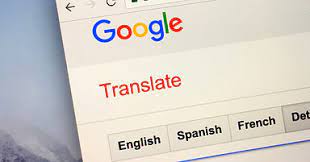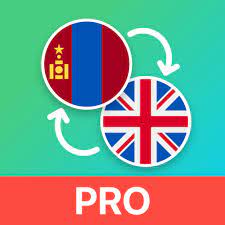Google Translate: Breaking Language Barriers for Free
In today’s interconnected world, language barriers can often hinder effective communication and limit opportunities for collaboration and understanding. However, thanks to the power of technology, tools like Google Translate have emerged as game-changers in breaking down these barriers. With its user-friendly interface and impressive translation capabilities, Google Translate has become a go-to resource for millions of people around the globe.
One of the most remarkable aspects of Google Translate is that it is completely free to use. This accessibility has made it an invaluable tool for individuals, businesses, and organizations alike. Whether you need to translate a simple phrase or an entire document, Google Translate provides a quick and easy solution with just a few clicks.
The strength of Google Translate lies in its vast database of languages. Currently supporting over 100 languages, it covers a wide range of dialects and variations. From widely spoken languages like English, Spanish, and Mandarin to less common ones such as Swahili or Icelandic, Google Translate offers an impressive repertoire that caters to diverse linguistic needs.
The accuracy of translations provided by Google Translate has significantly improved over the years. Leveraging advanced machine learning algorithms and neural networks, the system constantly learns from vast amounts of data to enhance its translation capabilities. While it may not always produce flawless translations due to the complexities and nuances of different languages, it consistently delivers reliable results that can be understood with relative ease.
Google Translate also offers additional features beyond basic text translation. For instance, users can take advantage of its speech-to-text functionality by speaking into their device’s microphone for instant translation in real-time. This feature proves particularly useful in situations where typing might be inconvenient or time-consuming.
Furthermore, Google Translate supports image translation through its mobile application. By simply taking a photo using your smartphone camera or uploading an image from your device’s gallery, you can extract text from signs, menus, or any other visual content and have it translated into your desired language. This feature has proven invaluable for travelers and individuals navigating unfamiliar environments.
While Google Translate is undoubtedly a powerful tool, it is important to note that it may not always capture the full context or nuances of a text. Slang, idiomatic expressions, or cultural references can pose challenges for any translation system. Therefore, it is advisable to use Google Translate as a starting point and consult with human translators or native speakers for critical or sensitive content.
In conclusion, Google Translate has revolutionized the way we overcome language barriers by providing a free and accessible solution to millions of users worldwide. Its ability to translate multiple languages accurately and quickly has made it an essential tool for communication, learning, and exploration across borders. As technology continues to advance, we can expect even more impressive developments in the field of translation, further bridging gaps between languages and cultures.
Frequently Asked Questions about Free Google Translate
- Is Google Translate free?
- How accurate is Google Translate?
- Does Google Translate work offline?
- What languages does Google Translate support?
- How do I use Google Translate?
Is Google Translate free?
Yes, Google Translate is free to use. It is a widely accessible translation tool that allows users to translate text, documents, websites, and even images without any cost. The service is available online through the Google Translate website and as a mobile application for both Android and iOS devices. Users can simply visit the website or download the app from their respective app stores to access the translation services provided by Google Translate at no charge.
How accurate is Google Translate?
Google Translate has made significant improvements in accuracy over the years, thanks to advancements in machine learning and neural network technologies. While it can provide reasonably accurate translations for common phrases and sentences, it is important to note that its accuracy may vary depending on several factors.
The accuracy of Google Translate largely depends on the complexity and structure of the text being translated. Simple and straightforward sentences tend to yield more accurate results compared to complex or ambiguous ones. Additionally, translations between languages that share similarities in grammar, vocabulary, or sentence structure are generally more accurate.
However, Google Translate may struggle with idiomatic expressions, slang, cultural references, or context-specific language nuances. These elements can be challenging for any translation system as they often require a deep understanding of cultural and linguistic contexts that may not be easily captured by algorithms alone.
It is also worth mentioning that Google Translate’s accuracy can vary between language pairs. Some languages may have received more attention and resources in terms of training data and development efforts, resulting in higher accuracy levels compared to others.
To mitigate potential inaccuracies, it is advisable to use Google Translate as a starting point or for basic translations. For critical or sensitive content, consulting with human translators or native speakers is recommended to ensure the highest level of accuracy and quality.
Overall, while Google Translate has made significant strides in improving its accuracy over time, it is important to approach its translations with caution and consider its limitations when dealing with complex or nuanced texts.
Does Google Translate work offline?
Yes, Google Translate offers an offline mode that allows users to access translation features even without an internet connection. This feature is particularly useful when traveling to areas with limited or no internet access.
To use Google Translate offline, you need to download the desired language pack in advance. These language packs contain the necessary data for offline translation. Here’s how you can enable and use the offline mode:
Open the Google Translate app on your device (make sure it is updated to the latest version).
Tap on the menu icon (usually represented by three horizontal lines) located in the top left corner of the app.
Select “Offline Translation” from the menu options.
You will see a list of available languages for offline translation.
Tap on the download icon next to each language you want to use offline.
Wait for the download process to complete.
Once you have downloaded the desired language packs, you can use Google Translate without an internet connection by following these steps:
Open the Google Translate app.
Select the languages you want to translate from and into by tapping on the respective language icons at the top of the screen.
Type or paste your text into the input field, or use other features such as camera translation or speech-to-text based on your needs.
The translation will appear below, and you can read or listen to it.
It’s important to note that while offline mode provides basic translation functionality, it may not offer all features available when connected to the internet, such as real-time conversation mode or access to certain specialized dictionaries or phrases.
Remember to periodically update your downloaded language packs when you have an internet connection so that you have access to any improvements or additions made by Google.
Overall, Google Translate’s offline mode is a valuable feature that allows users to continue translating languages even in situations where an internet connection is not available.
What languages does Google Translate support?
Google Translate currently supports over 100 languages, including but not limited to:
- Afrikaans
- Albanian
- Amharic
- Arabic
- Armenian
- Azerbaijani
- Basque
- Belarusian
- Bengali
- Bosnian
- Bulgarian
- Catalan
- Cebuano
- Chinese (Simplified and Traditional)
- Corsican
- Croatian
- Czech
- Danish
- Dutch
- English (US, UK, and other variations)
- Esperanto
- Estonian
- Filipino
- Finnish
- French
- Frisian
- Galician
- Georgian
- German
- Greek
- Gujarati
- Haitian Creole
- Hausa
- Hawaiian
- Hebrew
36.Hindi
37.Hmong
38.Hungarian
39.Icelandic
40.Igbo
41.indonesian
42.Irish
43.Italian
44.Japanese
45.Javanese
46.Kannada
47.Kazakh
48.Khmer
49.Kinyarwanda
50.Korean
How do I use Google Translate?
Using Google Translate is simple and straightforward. Here’s a step-by-step guide on how to use this powerful tool:
- Access Google Translate: Visit the Google Translate website or download the Google Translate app from your device’s app store. It is available for both Android and iOS.
- Select languages: Choose the language you want to translate from in the left drop-down menu, and the language you want to translate to in the right drop-down menu. You can also use the “Detect Language” option if you’re unsure of the source language.
- Enter text: Type or paste the text you want to translate into the text box provided. You can enter a single word, a phrase, or even a whole document.
- Choose translation method: Google Translate offers different methods for translation. You can click on the “Translate” button to get an instant translation of your text, or you can click on the speaker icon to hear an audio pronunciation of the translated text.
- Explore additional features: Google Translate offers various additional features that can enhance your translation experience. For example, you can click on the camera icon to access image translation, where you can take a photo or upload an image containing text for translation.
- Use speech-to-text: If you’re using the mobile app, you can utilize speech-to-text functionality by tapping on the microphone icon and speaking into your device’s microphone for real-time translation.
- Save translations: If you want to save a particular translation for future reference, click on the star icon next to it. This will add it to your Saved Translations folder within your Google account.
- Explore settings and customization options: Google Translate allows you to customize certain settings according to your preferences, such as changing default languages or enabling offline translation mode if you have limited internet access.
Remember that while Google Translate is a powerful tool, it may not always capture complex nuances accurately due to the nature of language and cultural differences. It is always advisable to consult with professional translators or native speakers for critical or sensitive content.
With Google Translate, breaking down language barriers has never been easier. Whether you’re traveling, communicating with someone from a different language background, or simply exploring new cultures, this tool can be a valuable companion in bridging linguistic gaps.


